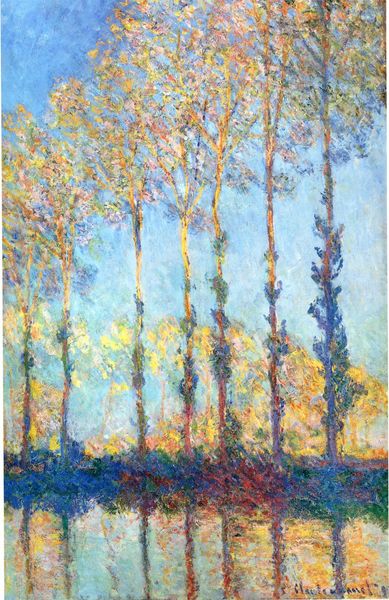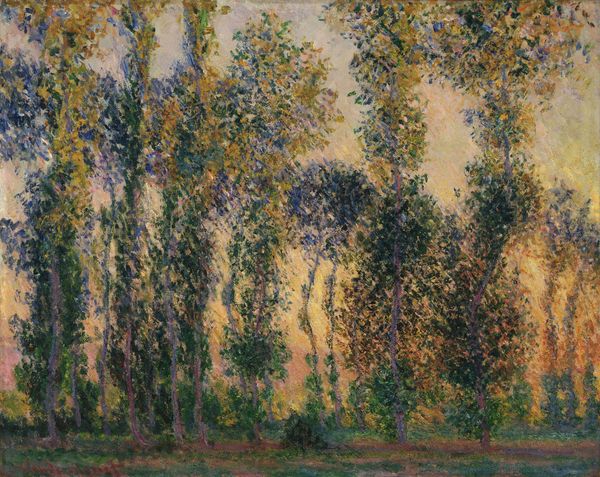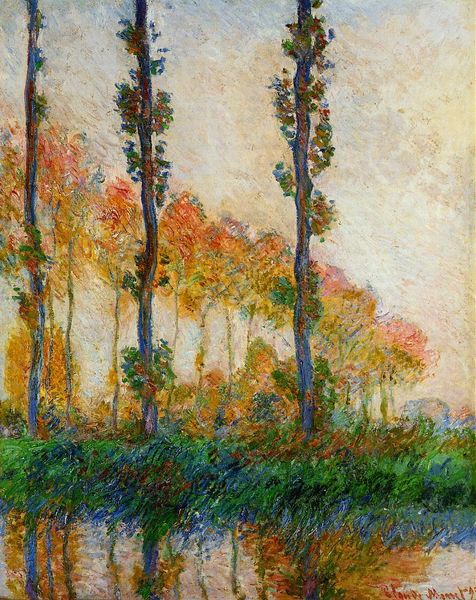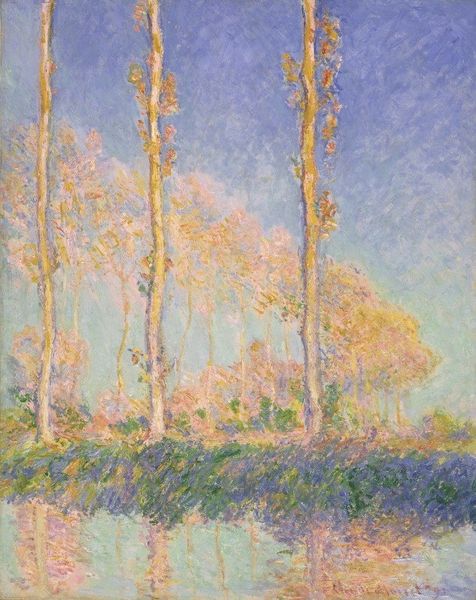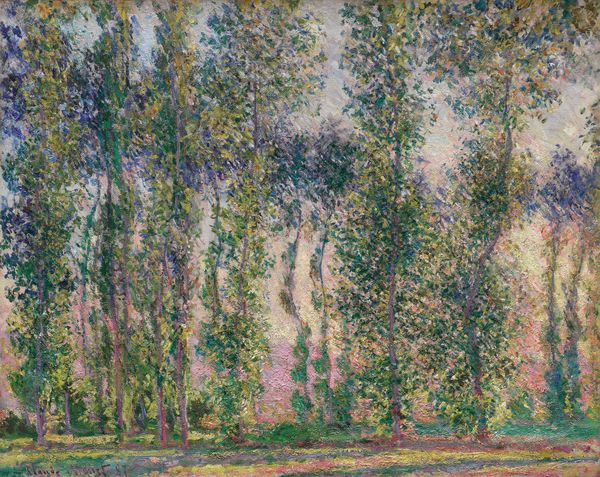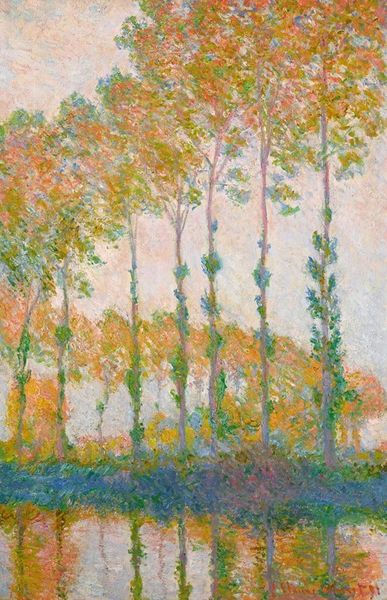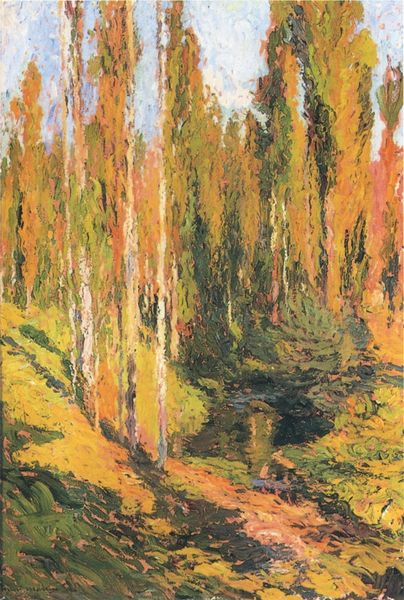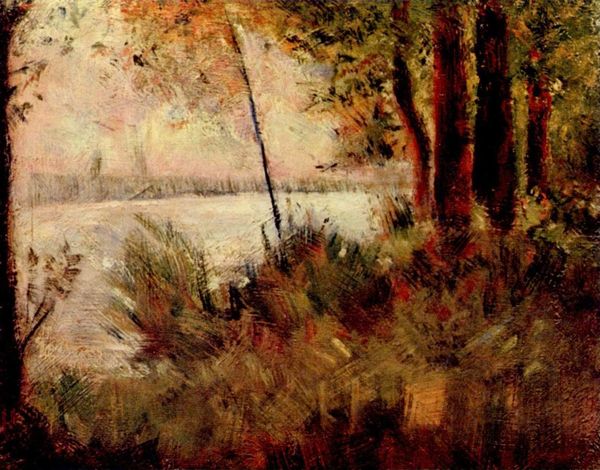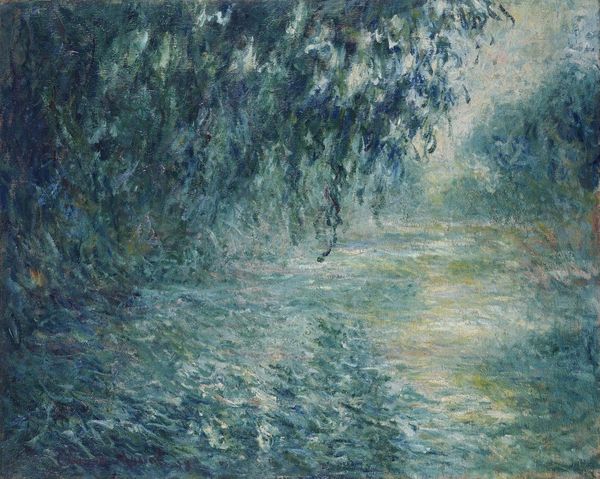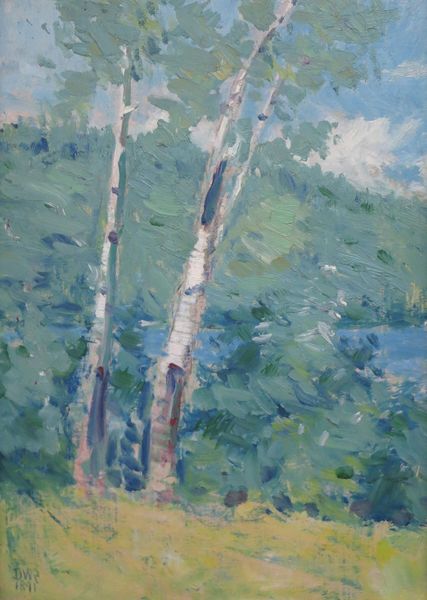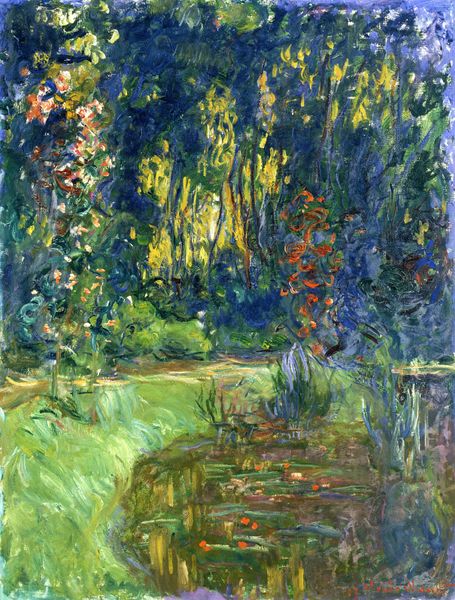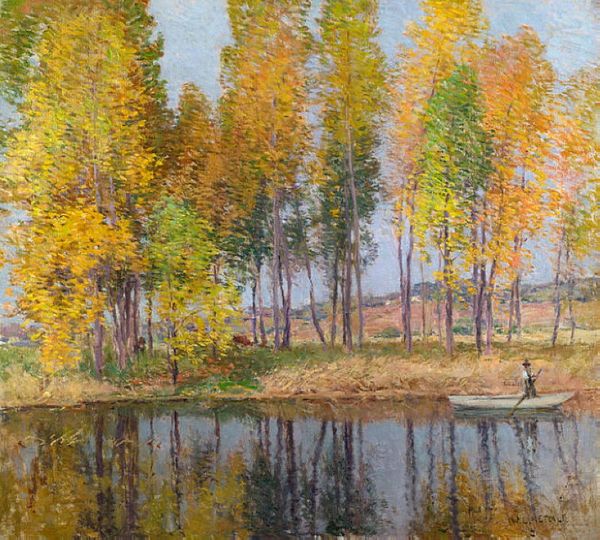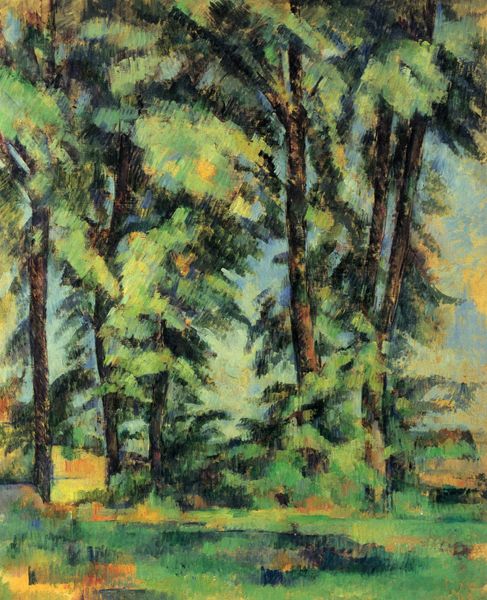
Copyright: Public domain
Editor: This is Claude Monet's "Poplars (Four Trees)" painted in 1891, oil on canvas. The verticality is really striking to me, and almost calming, but there is something else. How do you interpret this work? Curator: Well, beyond the formal elements, these poplars become symbols themselves. They echo classical columns, almost a temple, nature itself as sacred architecture. How do these trees “stand” for you? Editor: I guess they do have a certain monumental quality. They evoke a feeling of serenity, maybe even permanence. What do the reflections add? Curator: Reflections amplify the symbolic weight. They hint at a doubling of realities, the tangible world mirrored by an elusive, dreamlike realm. In a psychological context, could the image act as an illustration for how one's hidden depths rise up and meet one's daily persona? Editor: That's a cool connection. So, beyond just being pretty, the reflection hints at something deeper? Like a conversation between different parts of ourselves or even something about mortality? Curator: Exactly. Monet captured a specific moment in time, but through his art, he transcends it. He is exploring the visual markers through the psychology and the history that lives through these landscapes. And mortality is at the heart of the landscape genre, which the impressionists tried to update through feeling. What do you think these 'portraits of trees' meant to the community it was painted in? Editor: I hadn't thought of that. Maybe they serve as a link to our cultural memory as well. Thank you; that makes me appreciate the painting on a deeper level. Curator: My pleasure. Symbolism hides in plain sight; one only has to be open to see it, or at least look!
Comments
No comments
Be the first to comment and join the conversation on the ultimate creative platform.
